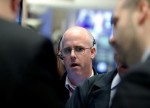Opening remarks at the T2S launch celebration
Mario Draghi, President of the ECB,
Milan, 2 July 2015
Ladies and gentlemen,
I am very happy to be here today to celebrate the official launch of the TARGET2-Securities platform with you. The occasion is made all the more special by this beautiful venue. Since settling here in 2013, MUBA – the Milan Children’s Museum – has turned this location into a place where children can unleash their inspiration, their artistic talents.
Drawing on the creativity around me and given this evening’s theme of winning stories, I hope you will indulge me as I tell one of our own winning stories – the tale of how the shared vision of TARGET2-Securities became a successful European reality.
Let me start by setting the scene. T2S is a central part of the broader story of European integration. In describing this process, Robert Schuman said in 1950 that “Europe will not be made all at once, or according to a single plan. It will be built through concrete achievements.” The path has indeed been dotted with many of these achievements. For instance, when the euro was introduced in 1999, there was an urgent need for a payment system that would be able to process large-value euro payments related to monetary policy operations as well as interbank payments in the new currency.
TARGET was created as a way of linking the existing systems in Europe – the first of our achievements in this realm. Yet it quickly became clear that a more connected system would be needed, and in May 2008, TARGET was completely replaced by TARGET2, a fully integrated settlement platform. TARGET2 has since become one of the largest payment systems in the world, and the market’s first choice for large-value payments in euro, with a turnover of €492 trillion last year.
While these were important accomplishments which resulted in a high level of integration on the cash side, the infrastructure supporting capital markets continued to be highly fragmented. Europe had over 30 different systems for settling securities. The overwhelming number of rules and approaches meant that the whole payments and settlements process remained convoluted and costly.
As a result, T2S was developed. Fragmentation was replaced with a simplified, universal platform which could be used to settle securities transactions in central bank money. The Eurosystem, the market, and the more than 100 institutions making up the governance structure collaborated from the very start, seeking to deliver a solution that would make Europe a better place to invest and help European businesses reach a larger investor base. We actively sought and responded to the views of all stakeholders, which greatly enriched the whole process and led to a better final outcome than we could ever have achieved alone. There is a saying that “teamwork divides the task and multiplies the success” – and this was certainly the case for T2S. I would like to take this opportunity now to thank all involved for years of constructive input and enthusiasm throughout the project.
Yet much like any story is incomplete without twists and turns, the construction of TARGET2-Securities has not been a universally smooth or completely steady process.
For instance, not everyone anticipated the momentum that our harmonisation agenda would gain. When we originally set out to build T2S, there was a fear that we were putting the cart before the horse. It was said that we could not, and should not, develop an integrated securities settlement platform until we had a fully harmonised rulebook for post-trading. While our approach may have seemed counterintuitive at the time, it has proven to be highly effective. T2S provided the concrete incentive needed to drive the harmonisation process forward. The market could see that aligning their rules and practices would help them get the most out of T2S, and so they began to harmonise out of choice and not out of legal obligation.
The project took another turn on 17 September of last year, when the Central Securities Depositories (CSD) regulation came into force. This was in many ways an admission that while market initiative can be a tremendous driving force, sometimes, legislative action is needed to give the market the space it requires to achieve its full potential. Until the adoption of these rules, securities depositories had been somewhat constrained in what they could achieve by the fact that they were subject to differing national laws and requirements. The CSD Regulation streamlined some of these guidelines, thereby providing the legal framework for T2S’ technical operations. This gave further momentum to the post-trade harmonisation efforts.
These unexpected occurrences in the story underline the resilience of the T2S team throughout this endeavour, and enrich the eventual completion of the project.
Where have these events taken us? Thanks to T2S, Europe now has an integrated platform for settling securities transactions in central bank money in real time. Cross-border settlement of both debt securities and equities is now treated in the same way as domestic settlement, with harmonised conditions, making it easier and more cost-effective for investors and companies to buy and sell shares in other countries, for example. With T2S, issuances – which have so far been largely restricted to the national level – are now available on a European scale, making it easier to attract foreign investors. Securities depositories can provide safer and more efficient services to their clients, at a lower cost. It also allows market participants to manage their collateral and liquidity needs more effectively, as it is now much easier to move collateral from where it is to where it needs to be, anywhere in Europe.
While this short list of advantages does mark a “concrete achievement,” as described by Schuman, the end of the T2S story remains unwritten. Last minute adjustments are still being made – as you know, Monte Titoli was due to migrate along with the four other markets in wave 1. However, following the request from the Italian market for sufficient testing time, the CSD community and the Eurosystem jointly supported adjustments to the migration plan for Monte Titoli and its clients. We are looking forward to them joining the platform on 31 August.
Moreover, alongside these continuous adjustments, there are still some areas where we need to achieve greater harmonisation if we want to reach our goal of a fully integrated financial sector in Europe. This is why the ECB and the Eurosystem fully support the ongoing development of a European Capital Markets Union (CMU).
In my view, two main pillars support the establishment of the CMU: the twin prospects of greater risk-sharing and more diverse sources of financing.
First, more integrated capital markets will allow Europe to better smooth any future economic shocks. A recent study from the IMF finds that Euro area capital markets only absorb a very small share of shocks, compared with almost 50% in the United States. Shock absorption is particularly weak during crisis periods. [1] A capital markets union, and the corresponding increase in cross-border holdings of debt and equity, will allow for greater diversification in risk-sharing, helping businesses and households cushion economic downturns.
Second, the establishment of CMU will allow businesses to enjoy a greater range of funding choices and help reduce the link between a firm’s location and its cost of funding. In Europe, the share of financing obtained in capital markets stands at 25%, whereas this figure is 80% in the United States. Cross-border frictions also impede the ability of firms to gain access to financing from across the Union. By removing fragmentation in capital markets, CMU will allow businesses and households to access a larger variety of funds, and stimulate growth.
TARGET2-Securities will form the foundation for these two pillars, and for the establishment of the Capital Markets Union. If we consider the fact that settling a cross-border transaction in Europe used to cost up to ten times as much in Europe as it does in the United States, the importance of our new settlement platform to the deeper integration of capital markets becomes evident. Indeed, T2S will facilitate cross-border bonds and equities trading, which means that we are already making progress towards completing the CMU. Moreover, as part of its harmonisation agenda, T2S has taken steps towards many of the goals in the CMU agenda, such as harmonising withholding tax procedures and resolving conflicts of law. In this sense, T2S is a demonstration of the market’s willingness to achieve deeper integration on a European scale.
But legislative and regulatory action will also be required if the remaining barriers in the field of market infrastructure are to be removed. This is because financial markets in Europe are subject to a vast network of legal rules, which sometimes conflict on issues such as taxation requirements, insolvency procedures and corporate governance. For full integration, we need to have a single rulebook for capital markets, and all market participants must have equal access to markets.
It is particularly important to emphasise the rule-based nature and legal side of this system when considering the greater risk of contagion which may accompany the development of the Capital Markets Union. The further integration of Europe’s financial sectors may enhance systemic risk across the continent, meaning that ultimately, a single regulatory supervisor and macroprudential toolkit for capital markets should be established. This is mostly a long-term consideration; yet we must remember that legal tools will be necessary to bring out the full benefits of deeper integration.
Let me conclude.
If well designed and thoroughly implemented, a genuine capital markets union will deepen the Single Market and contribute to the development of a more prosperous union. And T2S – a tremendous achievement – will serve as the basis for these further achievements, in accordance with the process envisioned by Schumann 65 years ago.
Thank you.








Add a Comment
We encourage you to use comments to engage with other users, share your perspective and ask questions of authors and each other. However, in order to maintain the high level of discourse we’ve all come to value and expect, please keep the following criteria in mind:
Enrich the conversation, don’t trash it.
Stay focused and on track. Only post material that’s relevant to the topic being discussed.
Be respectful. Even negative opinions can be framed positively and diplomatically. Avoid profanity, slander or personal attacks directed at an author or another user. Racism, sexism and other forms of discrimination will not be tolerated.
Perpetrators of spam or abuse will be deleted from the site and prohibited from future registration at Investing.com’s discretion.